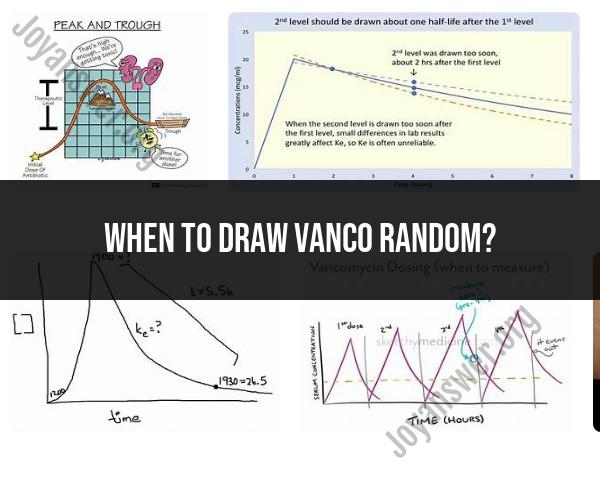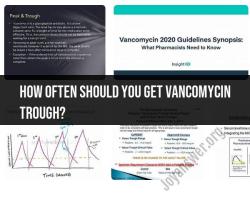When to draw Vanco random?
When referring to "Vanco random," it typically means a random blood draw to monitor vancomycin levels in a patient's bloodstream. Vancomycin is an antibiotic used to treat serious bacterial infections, and monitoring its levels helps ensure the medication is effective and within a safe therapeutic range.
The timing of a random vancomycin blood draw depends on the dosing regimen and the specific guidelines provided by the healthcare provider or the hospital's protocol. However, a "random" draw implies that it's not specifically timed concerning the last dose of the medication.
Here are some general considerations regarding random vancomycin draws:
Peak and Trough Levels: Vancomycin levels are commonly monitored through peak and trough levels. The peak level is typically drawn 1 hour after the completion of the vancomycin infusion to assess the highest concentration in the blood. The trough level is drawn just before the next dose to check the lowest concentration, ensuring it stays within the therapeutic range.
Random Draws: In addition to peak and trough levels, random vancomycin draws can provide insight into how the medication is being metabolized and eliminated in the body at various times. This random draw is not tied to a specific dosing schedule but provides additional information for monitoring and adjusting the dosing regimen if needed.
Clinical Assessment: The decision to perform a random vancomycin draw might also be based on the patient's clinical condition, response to treatment, renal function, and the presence of any signs or symptoms of infection.
Guidelines and Protocols: Hospitals or healthcare facilities may have specific protocols or guidelines for monitoring vancomycin levels, including random draws. These protocols might vary based on the institution's practices and the patient's individual factors.
It's important to follow the healthcare provider's instructions and the facility's guidelines regarding the timing and frequency of vancomycin blood draws. These measurements help ensure the medication is effective in treating the infection while minimizing the risk of adverse effects related to high drug concentrations.
When referring to "Vanco random," it typically means a random blood draw to monitor vancomycin levels in a patient's bloodstream. Vancomycin is an antibiotic used to treat serious bacterial infections, and monitoring its levels helps ensure the medication is effective and within a safe therapeutic range.
The timing of a random vancomycin blood draw depends on the dosing regimen and the specific guidelines provided by the healthcare provider or the hospital's protocol. However, a "random" draw implies that it's not specifically timed concerning the last dose of the medication.
Here are some general considerations regarding random vancomycin draws:
Peak and Trough Levels: Vancomycin levels are commonly monitored through peak and trough levels. The peak level is typically drawn 1 hour after the completion of the vancomycin infusion to assess the highest concentration in the blood. The trough level is drawn just before the next dose to check the lowest concentration, ensuring it stays within the therapeutic range.
Random Draws: In addition to peak and trough levels, random vancomycin draws can provide insight into how the medication is being metabolized and eliminated in the body at various times. This random draw is not tied to a specific dosing schedule but provides additional information for monitoring and adjusting the dosing regimen if needed.
Clinical Assessment: The decision to perform a random vancomycin draw might also be based on the patient's clinical condition, response to treatment, renal function, and the presence of any signs or symptoms of infection.
Guidelines and Protocols: Hospitals or healthcare facilities may have specific protocols or guidelines for monitoring vancomycin levels, including random draws. These protocols might vary based on the institution's practices and the patient's individual factors.
It's important to follow the healthcare provider's instructions and the facility's guidelines regarding the timing and frequency of vancomycin blood draws. These measurements help ensure the medication is effective in treating the infection while minimizing the risk of adverse effects related to high drug concentrations.





